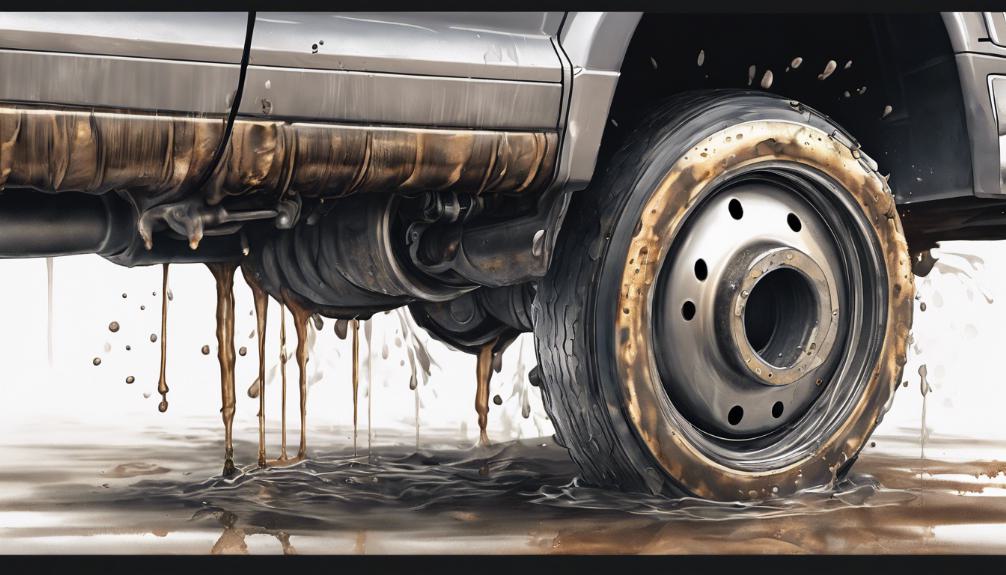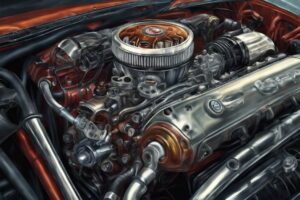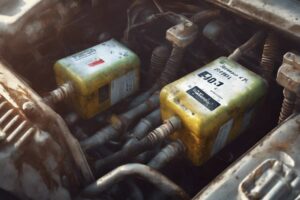If you see fluid residue around your axle seal, it may signal potential seal failure, risking damage. Puddles beneath your vehicle also suggest a failing CV axle seal.
Gaps and vibrations when steering, noise or vibration escalation, or the axle popping out indicate possible issues. Lack of lubrication from a failing seal threatens serious transmission or differential damage.
Early detection and professional inspection are important to prevent costly repairs. Timely action can avert severe consequences.
Further details can help you grasp the signs and importance of addressing failing CV axle seals promptly.
Key Points
- Fluid residue around axle seal indicates potential leak or seal failure.
- Puddles under the vehicle may indicate a failing CV axle seal.
- Constant axle popping out signals potential CV axle seal failure.
- Increased noise or vibration can signify failing CV axle seal.
- Difficulty steering could indicate failing CV axle seal.
Fluid Residue Around Axle Seal

If you notice fluid residue around the axle seal, it’s a clear indicator of a potential leak or seal failure.
This situation can lead to a loss of lubrication, putting your transmission or differential at risk of damage. To prevent overheating and costly repairs, proactive preventive maintenance is essential.
Regular seal inspection is key to catching issues early on.
To maintain your vehicle’s health, make sure to visually inspect the axle seals for any signs of leakage or residue buildup.
Addressing fluid residue promptly can prevent further damage and extend the lifespan of your CV axle seal. A failing seal not only risks the integrity of your vehicle’s components but can also lead to safety hazards on the road.
Professional servicing is recommended if you suspect a failing CV axle seal, as experts can efficiently replace the seal and prevent any potential complications.
Regular maintenance and timely repairs can save you from more extensive issues down the road.
Puddles Under the Vehicle
Check for puddles under your vehicle to quickly identify any potential leaking CV axle seal. Puddles of fluid accumulating beneath your car could be a sign of a failing CV axle seal.
If you notice these puddles, it’s important to address the issue promptly to prevent further damage.
Maintenance tips include regularly inspecting the area under your vehicle for any signs of leaks. If you suspect a leaking CV axle seal, it’s vital to have it inspected by a professional mechanic.
Ignoring the issue could lead to low fluid levels in the transmission or differential, potentially causing severe damage.
Repair options for a leaking CV axle seal typically involve replacing the seal to prevent further fluid loss.
Prompt attention to puddles under your vehicle can help you avoid costly repairs and maintain the continued safe operation of your vehicle.
Constant Axle Popping Out

Experiencing a constant popping out of the axle shaft is a clear indication of potential CV axle seal failure. This symptom not only poses risks of axle dislocation but also raises lubrication concerns for your vehicle’s components.
To address this issue effectively and guarantee the longevity of your vehicle, consider the following:
- Axle dislocation risks: The continuous popping out of the axle shaft can lead to the axle dislodging from its proper place, which may result in further damage to your vehicle’s transmission or differential components.
- Lubrication concerns: The repetitive axle popping out can disrupt the lubrication process for the axle, potentially causing friction and wear on critical parts.
This lack of proper lubrication can lead to increased strain on the components over time.
- Prompt action required: Addressing this issue promptly is essential to prevent further damage and maintain the safety and functionality of your vehicle.
If you notice this symptom, it’s recommended to have your vehicle inspected by a qualified mechanic to diagnose and resolve the underlying CV axle seal problem.
Increased Noise or Vibration
Addressing the constant popping out of the axle shaft promptly can help prevent further damage and safety risks, especially if you notice increased noise or vibration while driving, as these could be signs of a failing CV axle seal.
If you experience vibrations that intensify as you pick up speed, it may indicate issues with the CV axle seal.
Unusual noises or vibrations shouldn’t be ignored, as they might point to CV axle seal failure. Ignoring these signs can lead to more extensive damage, so it’s vital to act promptly.
Timely inspection and maintenance can prevent safety hazards and expensive repairs down the line. If you suspect a failing CV axle seal, it’s advisable to seek professional help for CV axle replacement.
Regular maintenance checks are essential to maintain the CV axle seal’s integrity and prevent potential issues.
How Can a Failing Steering Column Affect the CV Axle Seal?
A failing steering column can lead to erratic handling, causing excess movement and strain on the CV axle. This stress may compromise the CV axle seal, allowing lubricant to leak and contaminants to enter. Vigilance for signs of steering column_issues, like strange noises or stiff steering, is crucial to prevent extensive damage.
Steering Difficulties

If you notice difficulty steering your vehicle, it could be a sign of a failing CV axle seal.
When the CV axle seal starts to fail, it can impact your steering responsiveness and overall handling, making it harder to control your vehicle effectively. Here are a few key points to take into account:
- Steering Responsiveness and Handling: A leaking CV axle seal can lead to reduced lubrication in the steering system, causing your steering to feel loose or unresponsive.
This can make it challenging to navigate turns or keep your vehicle stable on the road.
- Maintenance and Repair Costs: Ignoring a failing CV axle seal can result in more significant steering issues over time, potentially leading to costly repairs.
It’s essential to address any steering difficulties promptly to prevent further damage and higher repair expenses.
- Steering Wheel Vibrations and Jerking Motions: If you experience vibrations or jerking motions in the steering wheel, it may be a sign of CV axle seal problems.
These symptoms can indicate that the seal is deteriorating, affecting your steering system’s performance.
Safety Risks Due to Seal Failure
Failure of the CV axle seal poses significant safety risks to your vehicle’s operation and your driving experience.
Ignoring CV axle seal leaks can lead to low fluid levels, causing damage to the transmission or differential, impacting your vehicle’s performance.
The lack of proper lubrication due to a leaking CV axle seal can increase the risk of overheating, potentially resulting in costly repairs.
Complete axle failure is a serious consequence of seal failure, posing safety hazards and compromising your control while driving.
It’s essential to address CV axle seal issues promptly to prevent loss of control on the road and safeguard your safety.
Delaying or neglecting maintenance on the CV axle seal can lead to expensive repairs and maintenance expenses.
Prioritizing the maintenance of your CV axle seal is vital to avoid safety risks and maintain the proper functioning of your vehicle.
As an Amazon Associate we earn from qualifying purchases.










